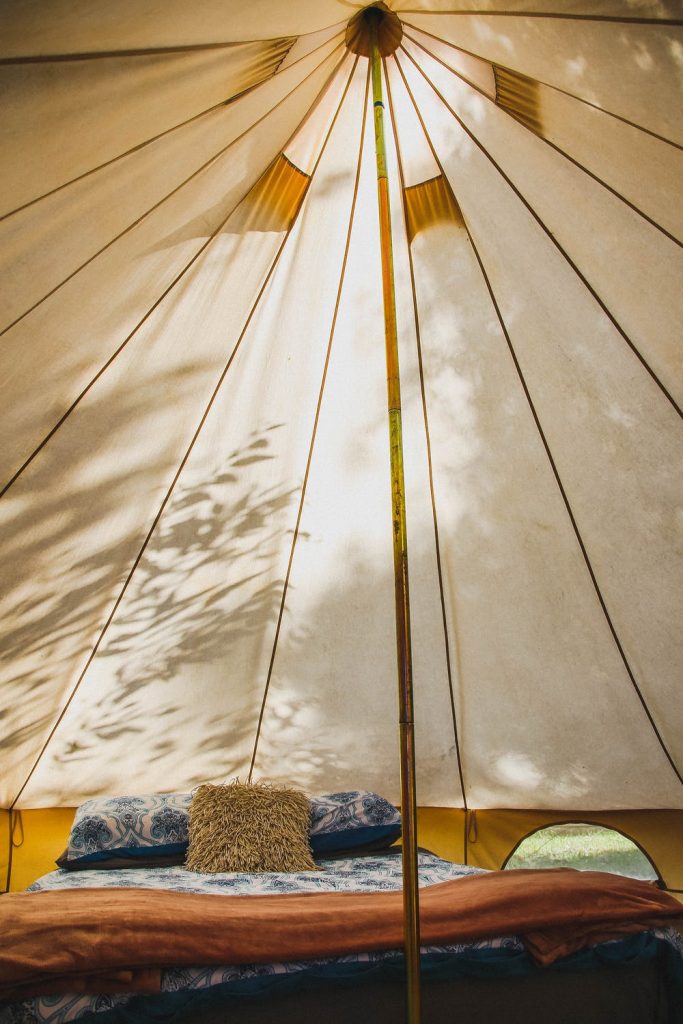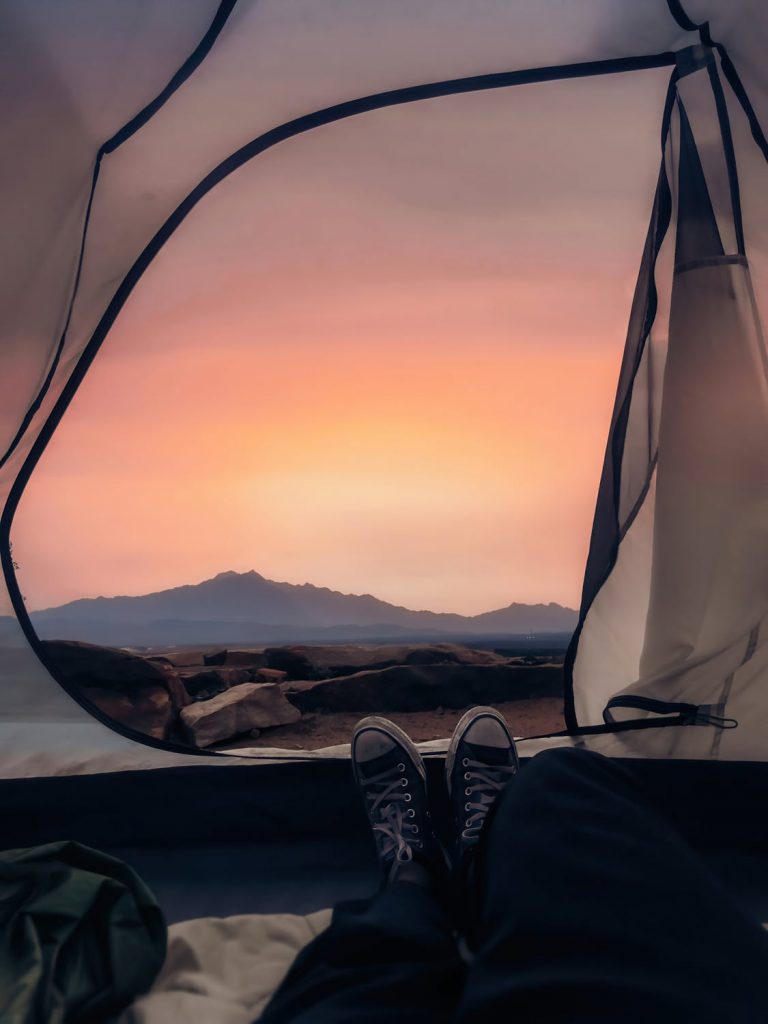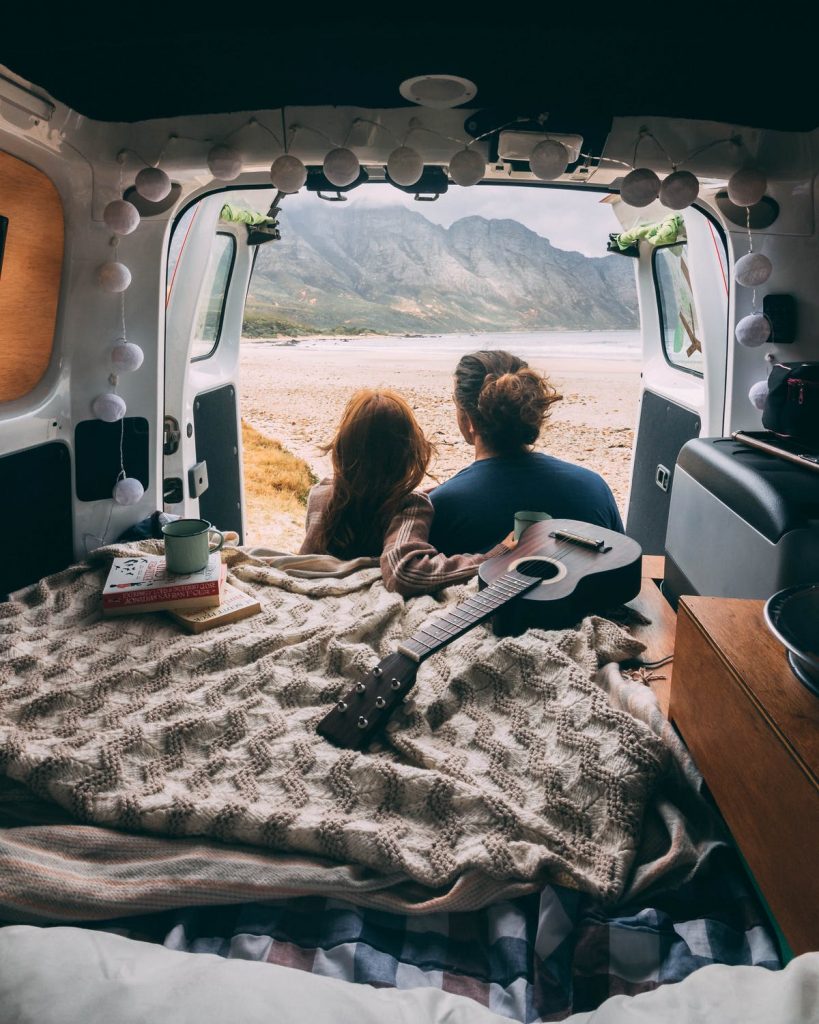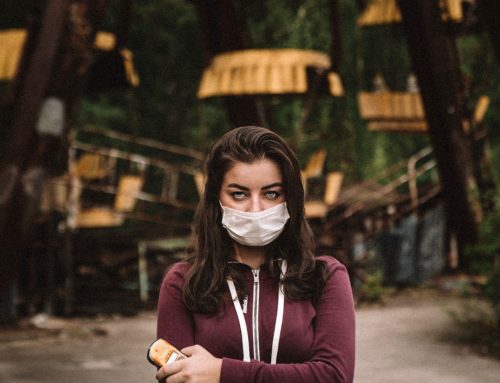Camping can be a cheap alternative to staying in a hotel or chalet. It can also be a way of connecting with nature – it forces you to get away from TV screens and spend more time outdoors. For families, it can often be a great bonding experience – without the distractions of technology, you can focus on one another.
All in all, there are lots of benefits to going on a camping trip. But just what type of camping is right for you? There are several different ways to enjoy the camping experience. Some are more luxurious, while others are more rugged and basic. This post delves into five different types of camping and how to prepare for each one.

1. Glamping
Glamping is the most luxurious form of camping. It involves staying at a campsite in a large pre-assembled tent (you don’t have the hassle of putting up your own tent). Most glamping tents have home comforts in them such as a bed, storage units, and lighting. Some even have power outlets and heating/aircon. It’s typically a lot more expensive than regular camping, which is something to bear in mind if you’re planning a camping trip on a tight budget.
You’ll usually have to use a separate toilet block (it’s very rare you’ll have a toilet in your tent) and you’ll need to bring your own toiletries. Some glamping tents will supply bedsheets and towels, while others won’t. Always do your research in advance as to what is included in the tent.
Some tents will have logs and a fire pit outside and may even supply a gas stove and firewood – if not, you may want to bring your own chairs, gas stove, wood, and firelighters. Knowing how to start a fire and use a gas stove are still valuable skills when glamping so that you can cook and generate warmth. Make sure to bring all your own food, cooking/eating utensils, and washing up liquid/sponge. Alternatively, if you don’t want to cook on a stove, you can always eat out somewhere (some campsites may even have restaurant facilities).
2. Regular camping
Regular camping involves staying in your own tent on a campsite. You get your own allotted pitch, which is maintained by the campsite. You have access to on-site bathroom facilities, which may include showers, areas for washing up, and in some cases even washing machines for doing laundry. Different campsites will have different levels of amenities (some have wi-fi, shops, and restaurants on-site, while others are more basic).
If you’ve never been camping before, it could be worth practicing how to put up a tent before you go camping. Most modern tents are fairly simple to put up and come with comprehensive instructions (if you’ve put up flat-pack furniture before, you should have no problem putting up a tent). Pop-up tents are some of the easiest options and are used by many seasoned campers due to their convenience. This post at Trek Baron lists 25 different types of tents to look into.
Most people bring a sleeping bag, pillow, and sleep mat. However, if you want to step up the comfort level, you could consider bringing an air bed and pump instead, along with some blankets. It’s worth bringing some pajamas and slippers in case you need to visit the bathroom at night.
As with glamping, you’ll want to bring all your own cooking/eating utensils, as well as a gas stove, washing up equipment and materials for making a fire. Some campsites may not permit campfires – make sure to look into this ahead. Collapsible chairs and a table can be worth bringing for sitting out in the evening (you can just use logs, but chairs are generally more comfortable).

3. Wild camping
Wild camping involves pitching up your tent in the wilderness instead of on a campsite. It’s a much more stripped-back form of camping – you have to be able to cope without bathroom facilities and other amenities. Wild camping can give you more freedom if you’re hiking or cycling and is popular in national parks. Compared to staying at a campsite, it’s also free.
Finding the right place to pitch up your tent is important. You need to make sure that the ground isn’t too hard, bumpy, or boggy and you need to be sure that there are no dangers in the area. Be wary that wild camping is not legal in some places – you should always do your research before pitching up in a park or field.
Before going wild camping, you should invest in the right gear. If you’re hiking somewhere and pitching up a tent, you’ll want to buy yourself a lightweight tent that easily folds into a backpack. Lightweight waterproof clothing could also be a good investment. There are various compact kits you can buy to help with things like cooking. A decent flashlight could also be necessary as there likely won’t be any artificial lighting where you’re staying. Sites like EcoGearFX are great for sourcing the right gear. If you’re traveling with other people, you may be able to share gear and even out the load (which could be helpful if you’re hiking or cycling and want to reduce weight).
Most people bring their own food and water when wild camping. However, there is a more extreme version of wild camping that some people try called ‘survival camping’. This involves foraging for your own food and finding your own water sources. This type of camping is not recommended unless you’ve done some survival training – there are lots of books and sites that you can use to teach you the necessary skills.
4. RV camping
RV camping involves staying in an RV (recreational vehicle). This could be a caravan, a campervan, or a motorhome. RVs typically contain many of the amenities found in homes such as a bed, seating, kitchen facilities, and even a bathroom in some cases. This can make it a slightly more luxurious form of camping than staying in a tent.
You can pretty much park wherever you want in an RV, providing that there are no overnight restrictions (some car parks may have these in place). That said, many people prefer to park up at a campsite. This allows you to hook up to gas and electricity. Staying in a campsite can also offer security and access to bathroom facilities if you don’t have a bathroom in your RV (or if you would simply prefer not to use your RV’s toilet).
An RV is a big investment, which can put some people off. Basic second-hand caravans will usually still cost over a thousand dollars, while luxurious brand new motorhomes can cost upwards of fifty thousand dollars. Of course, many people are able to make up costs in the long run – you can go for adventures regularly and never have to pay for a hotel.
There’s a lot to pack when going on an RV trip. You’ll need to bring all your own bedding, toiletries and kitchen utensils. For cleaning and maintaining your RV, make sure to bring cleaning equipment and basic mechanical gear like a jack. A collapsible table and some deck chairs could be worth bringing so that you can sit outside your RV in the evening. You can find a more comprehensive list of things to bring on an RV trip here at Campers Inn.

5. Car camping
Car camping involves camping in your car. This is a bit like RV camping, but a lot less luxurious – it involves either taking down the backseats and sleeping in the trunk or simply leaning back on your front seats and sleeping there.
Sleeping in a car isn’t allowed in some places – always make sure that there are no legal restrictions in the area. You’ll likely want to park somewhere secluded but equally secure. 24/7 filling station car parks are often a great option – many people sleep overnight in parking bays here and you have access to bathroom facilities and food in the filling station.
Car camping is cheap and in some cases can be cozier than sleeping in a tent. There are many ways in which you can make car camping more comfortable such as buying a windscreen shield to block out light, bringing pillows to add padding to your chairs while sleeping and possibly bringing sleeping bags. Being able to take down the backseats and sleep in the trunk is the most comfortable option in most cases, but involves keeping the trunk free of luggage – a roof box or trailer could be a solution to this. As with regular camping, it’s worth bringing equipment like a gas stove, cooking equipment and collapsible chairs.
Certain types of car are likely to be more suited to car camping. Ideally, you want a more spacious vehicle so that you have room for sleeping and room for luggage (car camping in a Mini or a Smart car is not advised).


Leave A Comment